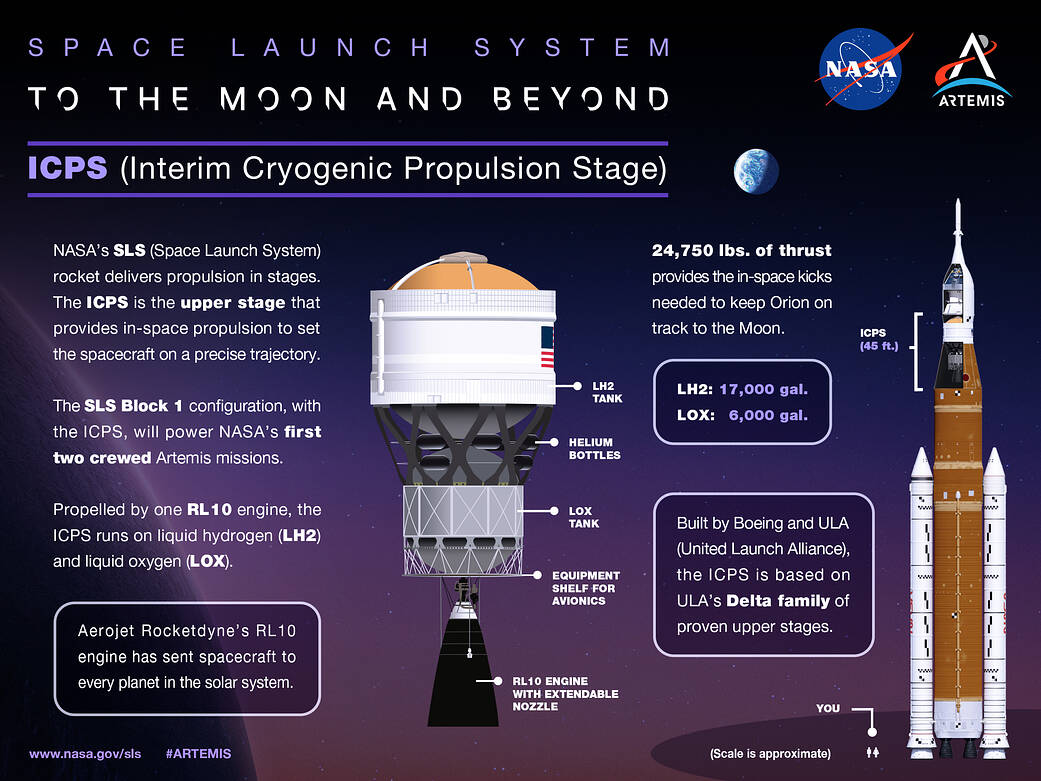NASA’s SLS (Space Launch System) rocket’s ICPS (interim cryogenic propulsion stage), with its single RL10 engine, produces 24,750 pounds of thrust to provide in-space propulsion for the agency’s Artemis II and III missions, the first crewed missions under Artemis. Like the mega rocket’s core stage, the ICPS uses liquid hydrogen and liquid oxygen to power its RL10 engine, manufactured by Aerojet Rocketdyne, an L3Harris Technologies company. The ICPS is built by ULA (United Launch Alliance) and Boeing. In addition to providing in-space propulsion, the ICPS also contains avionics to fly the mission after core stage separation until NASA’s Orion spacecraft separates from the ICPS to venture to the Moon.
Image Credit: NASA/Kevin O’Brien



























